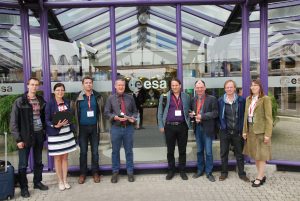The FRM4SOC project, with funding from ESA, has been structured to provide support for evaluating and improving the state of the art in ocean colour validation through a series of comparisons under the auspices of the Committee on Earth Observation Satellites (CEOS) Working Group on Calibration & Validation and in support of the CEOS ocean colour virtual constellation. FRM4SOC also strives to help fulfil the International Ocean Colour Coordinating Group (IOCCG) in situ ocean colour radiometry white paper objectives and contribute to the relevant IOCCG working groups and task forces (e.g. the working group on uncertainties in ocean colour remote sensing and the ocean colour satellite sensor calibration task force).
The project makes a fundamental contribution to the European system for monitoring the Earth (Copernicus) through its core role of working to ensure that ground-based measurements of ocean colour parameters are traceable to SI standards. This is in support of ensuring high quality and accurate Copernicus satellite mission data, in particular Sentinel-2 MSI and Sentinel-3 OLCI ocean colour products. The FRM4SOC project also contributes directly to the work of ESA and EUMETSAT to ensure that these instruments are validated in orbit.
FRM4SOC consortium is led by Tartu Observatory (TO, Estonia) and includes four partners – Royal Belgium Institute of Natural Sciences (RBINS, Belgium), National Physical Laboratory (NPL, UK), Plymouth Marine Laboratory (PML, UK) and ACRI-ST (ACRI-ST, France). The members of the Consortium are selected for their expertise in radiometric calibration, validation and development of MERIS ocean colour and of the project activities.
The FRM4SOC activities are highly complementary to current FRM and Ocean Colour activities being undertaken by the European Commission Joint Research Centre (JRC) to validate Copernicus satellite ocean color data products and safeguarding the standardization of EU radiometric measurements and datasets. Therefore several collaborative activities between the FRM4SOC Consortium and JRC are planned, which will enhance the outputs for the European Copernicus Observation Program. FRM4SOC includes also external collaborators from Europe and internationally who are major players in the Ocean Colour community and will participate in the comparison exercises and workshops.

